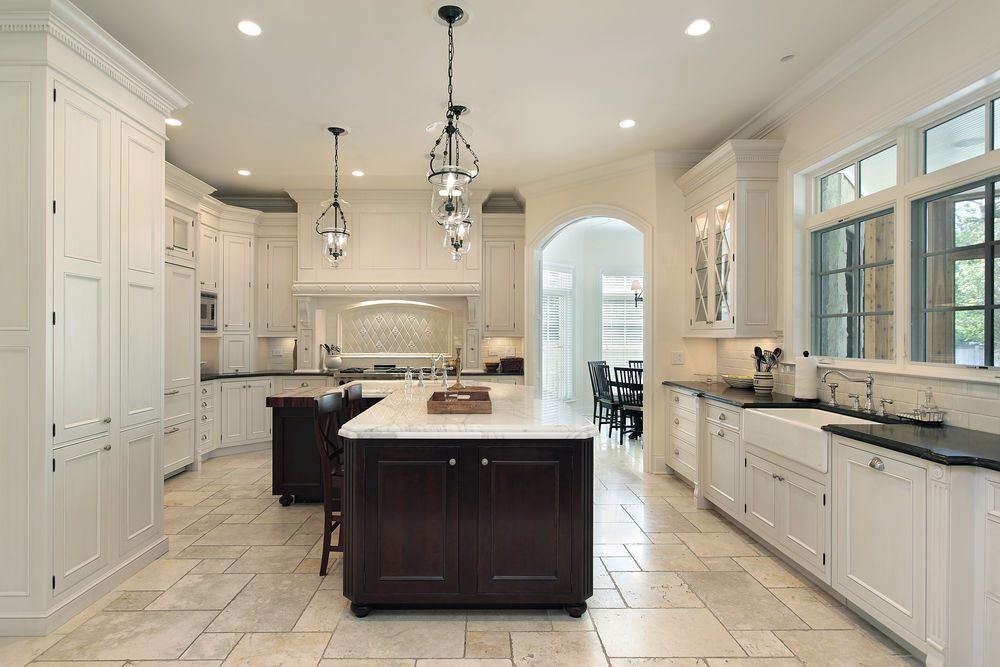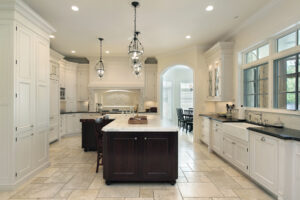When you picture marble counters, you probably imagine them as white, perhaps with some elegant gray veins. Marble has been synonymous with the color white — austere and bright — for decades, but that hasn’t always been the case.
Marble comes in a variety of colors, including bright pinks and violets as well as blacks. The Indian Taj Mahal is, of course, largely white, but many people don’t know that before Shah Jahan died, he’d already planned to build a complementary jet-black Taj Mahal nearby. You can visit the site and see the early planning stages to this day.
Marble is really limestone that’s been transformed over time. It’s largely made up of pure calcite, which is a crystal version of calcium carbonate.
It’s popular in sculpture, as a building material and of course for kitchen and bathroom counters. You’ll also see “faux marbling” as a painting technique that makes walls look like marble from a distance.
Marble Counters for Luxury
Many natural stones are considered an upgrade, investment and luxury in housing around the world.
During the metamorphic process of carbonate rocks like limestone, the recrystallization turns it into a one-of-a-kind mosaic featuring calcite crystals. You need both the right pressure and temperature to create marble, and that process often eliminates fossils and original textures that might have been present at one time.
To get white marble, you need to find pure limestone that has been recrystallized. Those telltale veins and whorls are the result of colored elements, which are really impurities. Chert, iron oxide, clay and silt are all common sediments in limestone that ultimately lead to those classic marble swirls.
Kolkata marble is especially renowned for those traditional patterns. Green — a result of having a lot of magnesium in the limestone — is also common.
Pick Your Marble
Once you’ve decided that marble countertops are the perfect natural stone for your kitchen or bathroom, it’s time to decide where you’ll get it. With quarries around the world, each one offering up a certain style, the color and pattern choices are almost limitless.
Some of the most popular types include Carrara from Italy, Proconnesian from Turkey and Pentelic from Greece. Some marble even comes right from the United States.
Maybe a purer white or ivory is what you have in mind. It’s been popular, especially in sculpture, because it’s a little softer and less prone to shattering than some other types. However, today’s marble counters are all designed with durability and toughness in mind, so they can handle anything a busy kitchen or bathroom dishes up.
Get help on selecting your perfect marble counters by contacting Intermountain Stone & Marble today.


